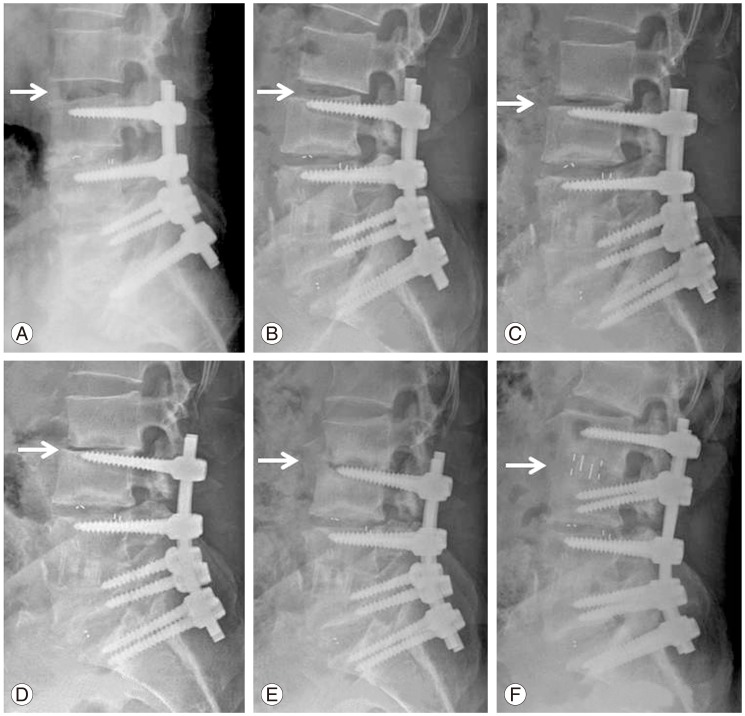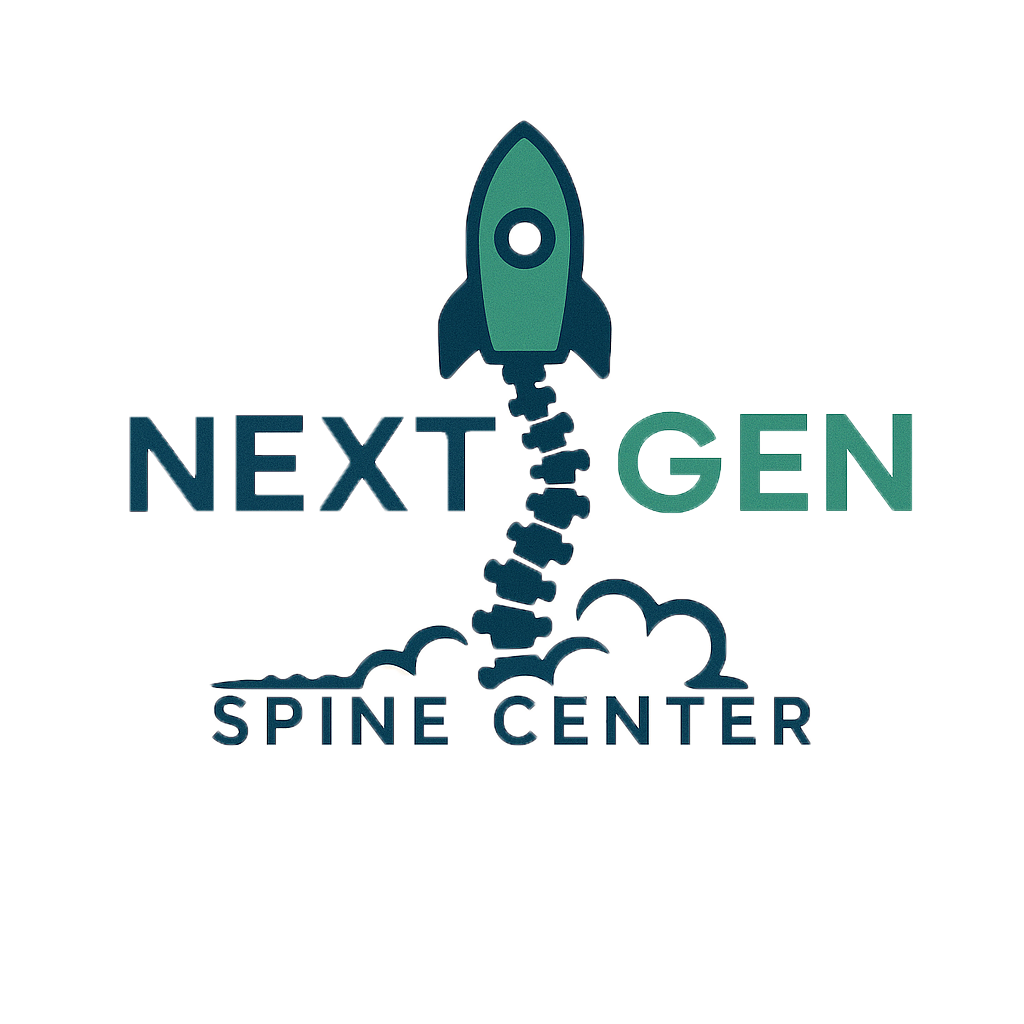Overview
Adjacent Segment Disease (ASD) is a condition that occurs when spinal segments above or below a previous spinal fusion develop accelerated degeneration. Over time, increased stress on these adjacent levels can lead to pain, instability, and neurological symptoms on the levels above or below the fusion, often resulting in additional fusions at those levels. ASD is a known potential long-term complication after spinal fusion surgery. The procedures performed at NextGen Spine Center are designed to avoid fusions which retains the natural motion of the spine and reducing the change of degeneration at the other levels.
Progressive settling, development of retrolisthesis, and segmental kyphosis was gradually developed in the adjacent segment during follow-up. The patient was treated by minimally invasive direct lateral interbody fusion of the adjacent segment and posterior extension of fusion. Postoperative (A) 3 months, (B)6 months, (C) 9 months, (D) 12 months, (E) 18 months, and (F) after revision.

Types of Adjacent Segment Disease
- Radiographic ASD: Degeneration visible on imaging but no symptoms.
- Symptomatic ASD: Degeneration associated with pain, nerve compression, or functional limitations.
Causes of Adjacent Segment Disease
- Common causes and contributing factors include:
- Increased biomechanical stress on adjacent discs and joints after fusion.
- Reduced motion due to a spinal fusion at one level often leads to ASC at the levels above and below
- Natural degenerative changes due to aging.
- Improper spinal alignment after surgery narrowing the foramen.
- Pre-existing mild degeneration that progresses over time.
Symptoms
- Symptoms of ASD can vary based on the location and severity of degeneration:
- New or worsening back or neck pain.
- Radiating pain into the arms or legs.
- Numbness or tingling sensations.
- Muscle weakness.
- Reduced range of motion or stiffness.
Diagnosis
- Medical history and surgical review.
- Evaluation typically involves:
- Physical examination of strength, sensation, and reflexes.
- X-rays to assess spinal alignment and disc height.
- MRI to visualize disc degeneration and nerve compression.
- CT scans for detailed bony anatomy if needed.
Conservative Treatment
- Non-surgical treatment options may include:
- Nonsteroidal anti-inflammatory drugs (NSAIDs) for pain relief.
- Physical therapy to improve core strength and flexibility.
- Activity modification and ergonomic adjustments.
- Epidural steroid injections to reduce inflammation.
- Bracing for short-term symptom relief.
Surgical Treatment
- Surgery may be recommended if symptoms persist or worsen despite conservative care:
- Extension of the spinal fusion to include newly degenerated segments.
- Decompression procedures to relieve nerve compression.
- Motion-preserving techniques, such as artificial disc replacement, in select cases.
Frequently Asked Questions
Q: How common is Adjacent Segment Disease?
A: Radiographic ASD occurs in up to 40% of patients after fusion, but not all develop symptoms.
Q: Can ASD be prevented?
A: Surgical techniques to preserve motion and proper alignment can reduce or eliminate the risk.
Q: Is additional surgery always necessary?
A: Not necessarily, however if the levels above and below the fusion have developed symptoms, surgery may be necessary.
Q: How long after fusion does ASD develop?
A: It can develop within a couple of years depending on the level where the fusion was performed and motion on the levels involved.
